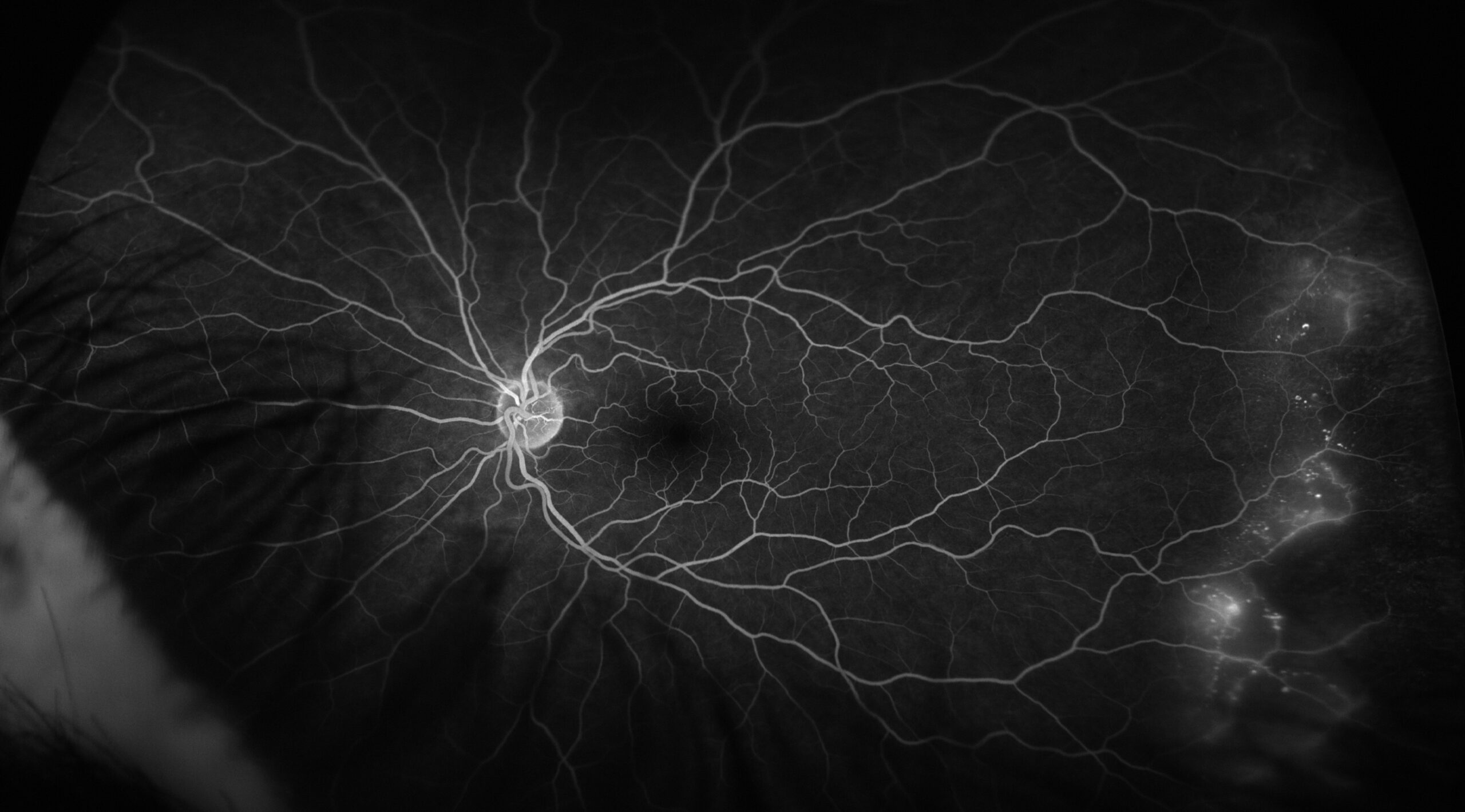- On this page: What Does My Doctor See?
Fluorescein angiography (FA) is a classic diagnostic test that involves taking photographs of the blood vessels in the eye with the help of a contrast dye. Fluorescein is a yellow dye that glows in the retina’s blood vessels when exposed to a certain wavelength of visible light.
These images can help evaluate or detect serious eye conditions such as:
During these exams, the patient’s pupils are dilated with eye drops. The contrast dye is then injected, usually into a vein in the patient’s arm. The dye travels up to the eye within a few seconds and “lights up” the blood vessels for the camera to take multiple photographs.
These tests are considered safe for the vast majority of patients. Fluorescein dye does not contain iodine and can generally be used in patients who have reactions to other intravenous contrast dyes. It is possible to have a minor reaction to the dye and develop symptoms including itching, nausea, or a rash. These symptoms can usually be managed with oral medication if severe.
Patients who receive fluorescein injections can expect their urine to appear bright orange for the first several hours after the test.

Your doctor can evaluate the health of the retina using this imaging technology. FA allows your doctor to detect diseases of the retina at early stages and has made timely intervention possible in a number of retinal conditions. FA may be required intermittently to assess a patient’s response to treatment or need for further therapy.